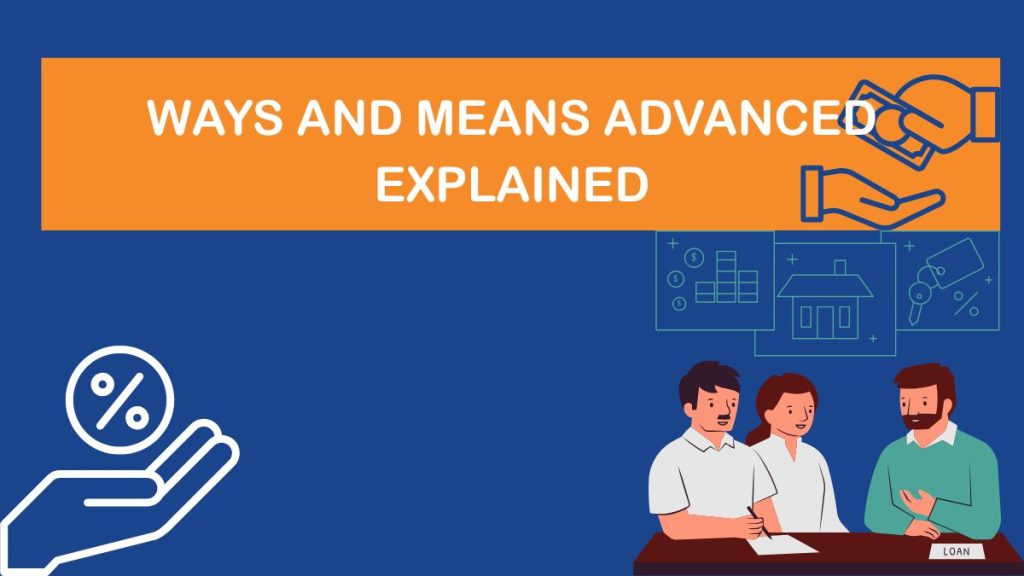Welcome to an in-depth discussion of one of India’s key fiscal mechanisms – the Ways and Means Advance (WMA). This blog explains how WMA works, its technical details, and its overall significance in managing the government’s short-term cash requirements. In simple terms, WMA is a temporary loan facility extended by the Reserve Bank of India (RBI) to help the government manage short-term mismatches between its revenue and expenditure.

The Basics of the Ways and Means Advance
WMA functions much like the overdraft facility at your local bank. When a household or business experiences a short-term cash shortfall, it arranges for extra funds in advance to manage the gap between money coming in and going out. Similarly, the government can signal its need for funds over a defined period—usually up to 90 days—if its expected receipts fall short of the anticipated expenditures. This mechanism ensures that essential operations, such as paying salaries or maintaining public services, are not disrupted by temporary liquidity issues.
How the WMA Mechanism Operates
The process can be broken down into a few key steps:
- Forecasting Needs: The government estimates its cash shortfall over a specific period, for example, six months. Based on this forecast, it informs the RBI of the required amount to bridge the gap.
- Loan Arrangement: The RBI, acting in a role similar to a bank, provides this short-term facility. This is analogous to arranging for an overdraft where the terms, including the amount and duration, are agreed upon well in advance.
- Interest Rate and Charges: The borrowing cost is linked to the prevailing repo rate. If the government’s borrowing under the WMA facility crosses a predetermined threshold—say 75% of the approved limit—an additional interest charge may be applied, typically around 2% more than the standard rate. Notably, although the government pays interest based on these terms, the eventual proceeds from these interest payments are returned to the government because of the unique relationship between the RBI and the government.
Historical and Fiscal Context
The WMA mechanism was introduced in 1997 based on key recommendations that aimed to reform the way the government managed its short-term liquidity. Prior to this arrangement, the government relied on an ad hoc system using treasury bills to meet its immediate funding needs. This older system often led to unchecked fiscal deficits and inflationary pressures as money was printed to cover gaps. The new system brought a disciplined and structured approach, reducing fiscal risks and ensuring that borrowing remains transparent and within predefined limits.
Technical Significance and Broader Implications
Understanding this system is critical for appreciating how short-term funding needs are managed without destabilizing the broader economy. Key points include:
- Cash Flow Management: WMA is designed to ensure that government cash flow remains uninterrupted, even when there are timing mismatches between its income (receipts) and expenditures.
- Fiscal Discipline: With a cap on the total borrowing limit (for instance, 1.5 lakh crore for a specific period), the system helps maintain fiscal discipline and prevents excessive reliance on borrowing.
- Interest Rate Considerations: The borrowing cost directly mirrors the central bank’s policy through the repo rate, ensuring that the interest burden is in line with macroeconomic conditions.
- Contingency Measures: In the event that the borrowing needs exceed 75% of the set limit, the system allows for an extra margin of borrowing under additional interest conditions, offering the government flexibility while keeping the process in check.
These aspects—temporary liquidity mismatch, repo rate, fiscal deficit management, and structured borrowing—are essential to understanding how modern fiscal systems function and contribute to a stable economic environment.
Final Thoughts
The Ways and Means Advance is a well-structured financial tool that plays a vital role in managing short-term liquidity challenges. By providing a clear framework for temporary funding needs, it ensures that essential government functions are maintained without leading to the unchecked creation of money, which could further escalate inflation.